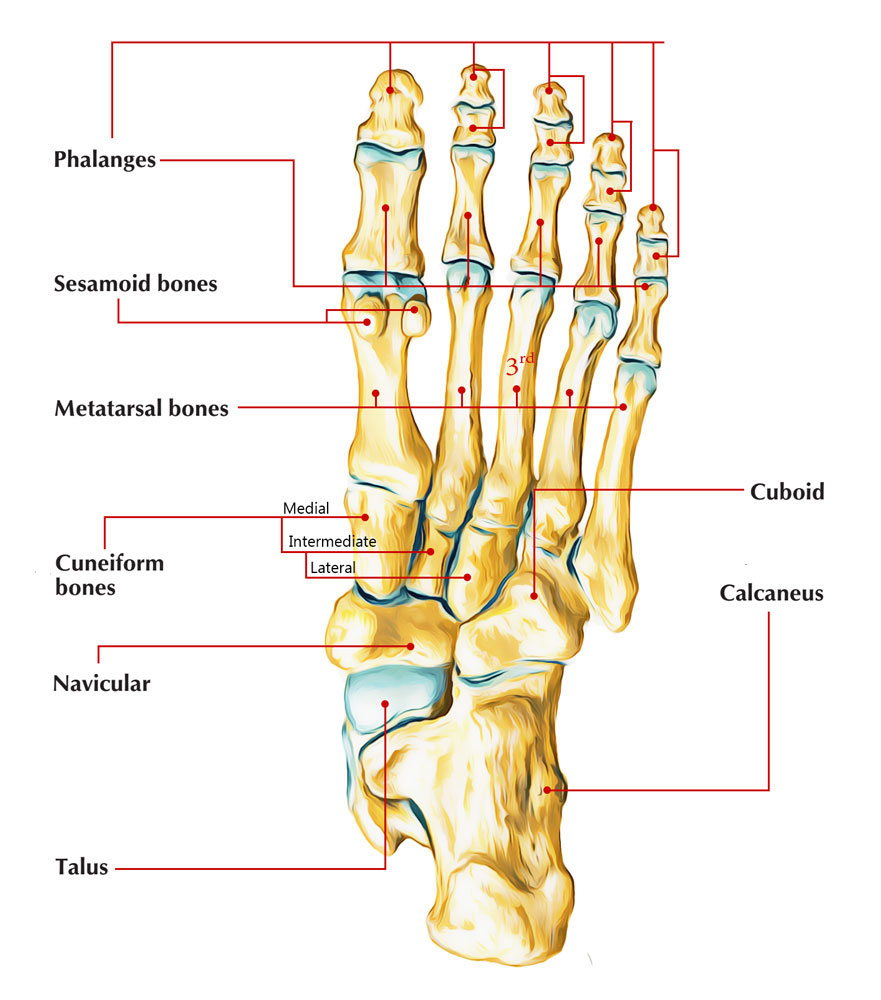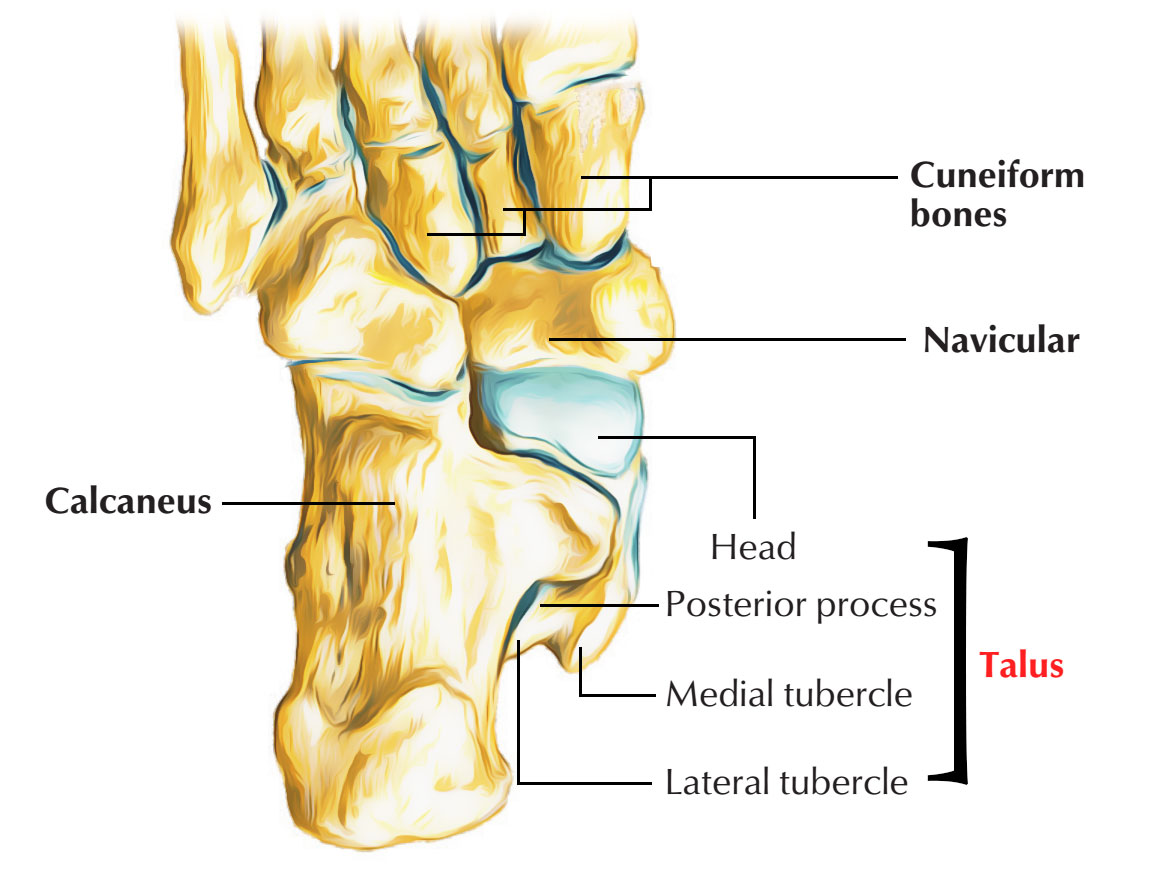The talus is the second biggest bone of the foot located on the upper side of the anterior two-third of the calcaneus. It takes part in the creation of three joints –
- Ankle (talocrural)
- Talocalcaneal (subtalar)
- Talocalcaneonavicular (pretalar).
It creates the connecting link in between the bones of the foot and the leg.

Talus
Anatomical Position
The talus has a head, a neck and also a body. The upper side of the body of the talus is covered up by a large trochlear articular side which articulates with the lower end of the tibia. The distal side of the head has a large convex side that joins with the navicular bone.
A groove divides this outgrowth into medial and lateral tubercles. When the talus is seen from below observe that the articular region on the head, for the navicular bone, elongates on to the inferior element of the head. The lower as well as posterior part of the body of the talus protrudes in reverse. This protuberance is referred to as the posterior process.
Behind this there are three sides, anterior middle and posterior, that joins with matching sides on the upper side of the calcaneus. The middle and posterior sides are split up by a deep groove referred to as the sulcus tali.
Side Determination
The side of talus is figured out by keeping it on the table-top in such a way that:
- Its rounded head is pointed forward.
- Its trochlear articular side (which is convex anteroposteriorly and concave from side to side) deals with up.
- Triangular articular side on the side of body deals with laterally meantime the comma-shaped articular side on the side of body is directed medially.
Functions and Connections

Divisions of Talus
The talus provides a head, a neck, and a body:
Head
- It is directed forward, medially, and somewhat down.
- Its anterior side provides a convex articular side which joins with the concavity of navicular bone.
- Its inferior side provides three articular sides:
- Posterior side is biggest and articulates with the middle side of calcaneus and creates a plane synovial subtalar joint.
- Middle side joins along with a spring ligament.
- Anterolateral side joins along with the anterior side of calcaneus.
Neck
- It is a constriction in the middle of the head and the body.
- It forecasts forward and medially via the body creating an angle of 150 ° with the body the angle is called neck-body angle.
- Distal part of dorsal side of neck supplies connection to the dorsal talonavicular ligament.
- Lateral side of the neck gives attachment to the anterior talofibular ligament.
- Plantar side of the neck provides a narrow deep groove referred to as sulcus tali that create sinus tarsi with the corresponding groove of calcaneus.
Body
The body of talus is cuboidal fit. It provides five sides – superior, inferior, medial, lateral, as well as posterior.
- Superior side: It joins with the distal side of the tibia.
- Inferior side: It provides a large oval concave side which articulates with the posterior side of calcaneus to create the subtalar joint.
- Medial side: Its upper part provides a comma-shaped articular side which joins with the medial malleolus.
- Lateral side: It provides a triangular articular side to articulate with lateral malleolus.
- Posterior side: It is narrow and protrudes backwards as the posterior process of talus. It provides an oblique groove limited by a small medial as well as large lateral tubercles. The groove lodges the tendon of flexor hallucis longus.
The talus ossifies via one centre which appears throughout the sixth month of intrauterine life.
Clinical Significance
Talus Fractures
A talus fracture is a break in among the bones that forms the ankle. This kind of fracture frequently happens throughout a high-energy occasion, such as a vehicle crash or a high-velocity fall.
Since the talus is essential for ankle movement, a fracture frequently leads to considerable loss of motion and function. For this reason, lots of talus fractures need surgical procedure. In addition, a talus fracture which does not recover correctly can cause severe issues, consisting of chronic pain.
Cause
A lot of talus fractures are the outcome of high-energy trauma such as a car crash or a fall from height. Traumas from sports, especially from snowboarding, are some other, less common reason for talar injuries.
Symptoms
Patients with talus fractures generally experience:
- Sharp pain.
- Inability to walk or sustain weight on the foot.
- Significant swelling bruising and tenderness.

 (46 votes, average: 4.70 out of 5)
(46 votes, average: 4.70 out of 5)